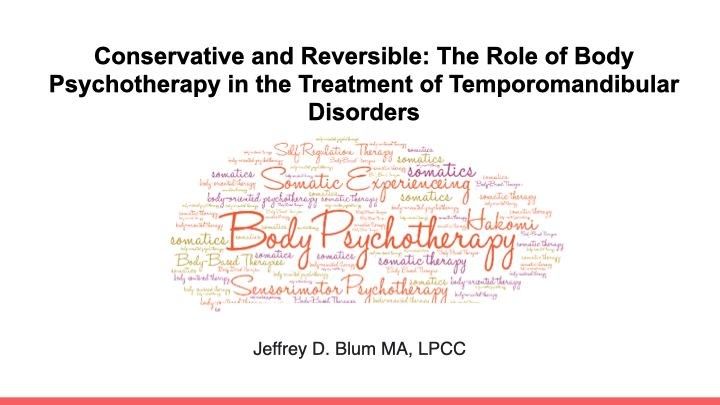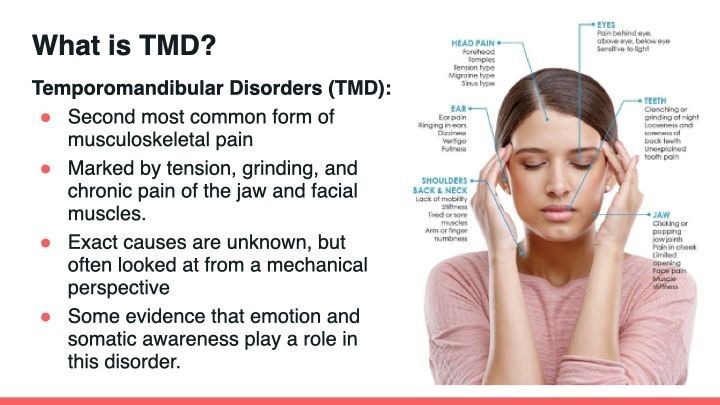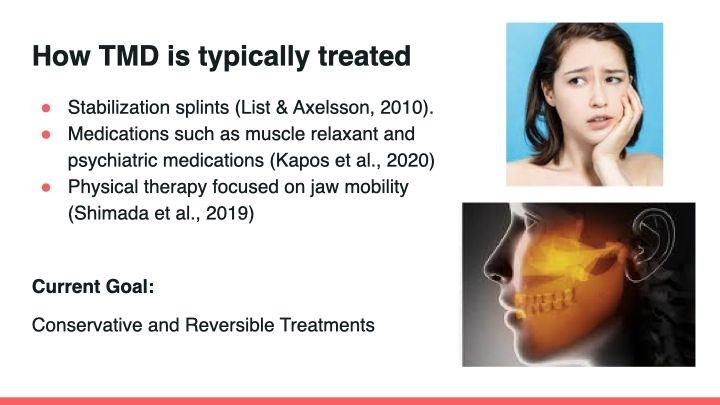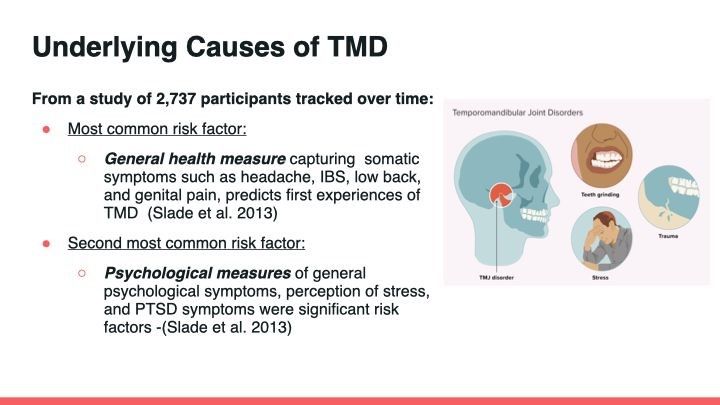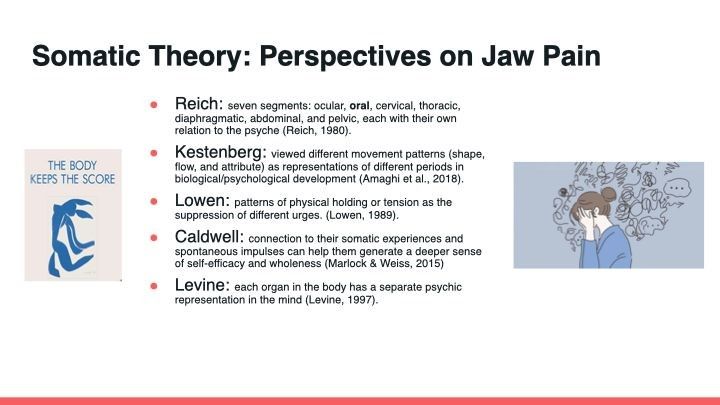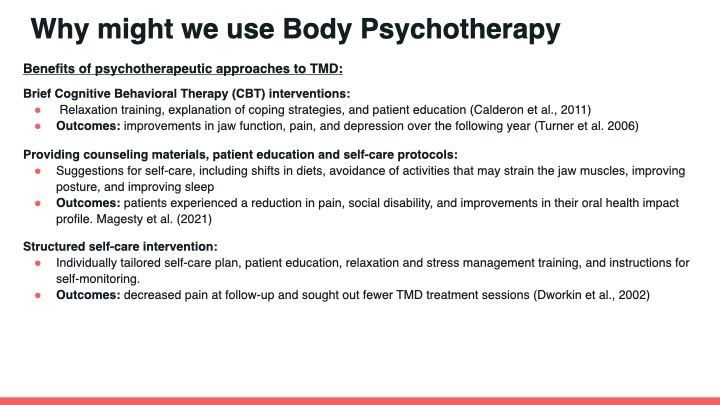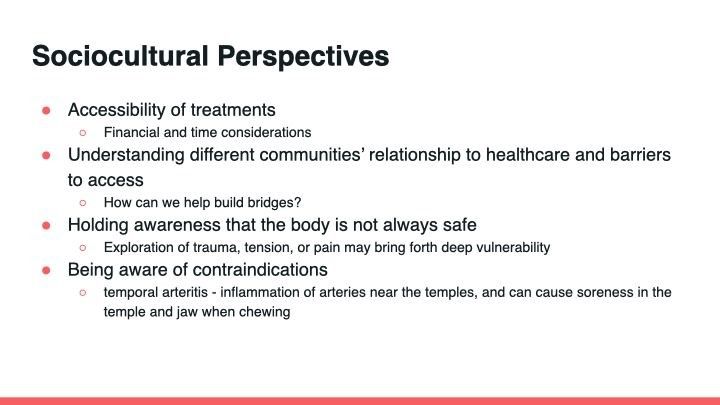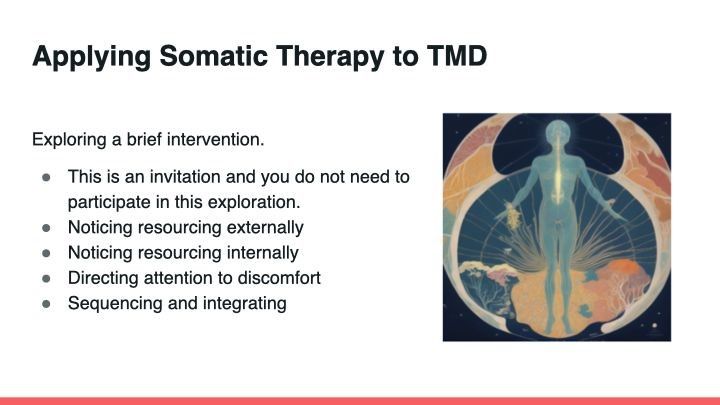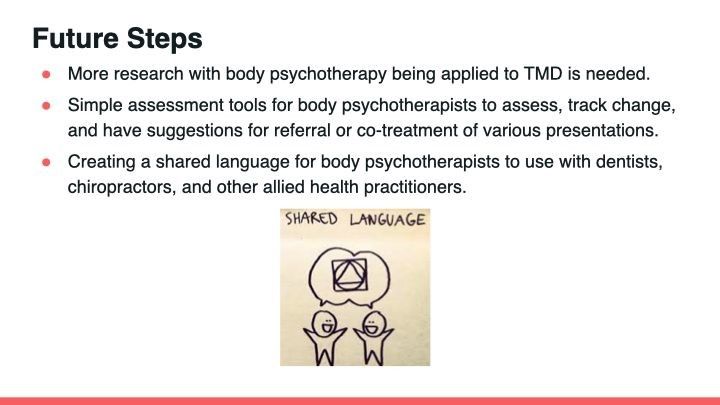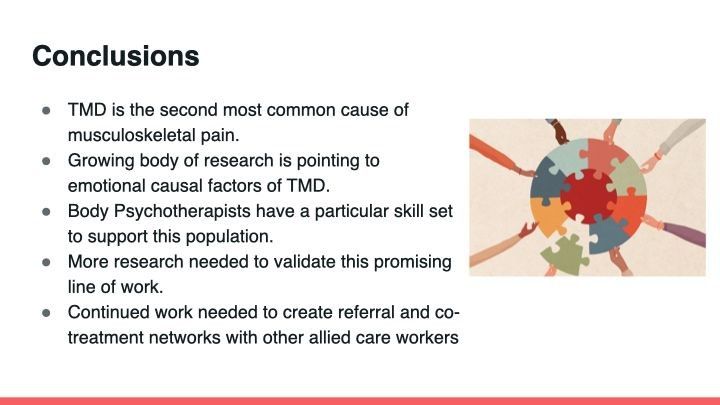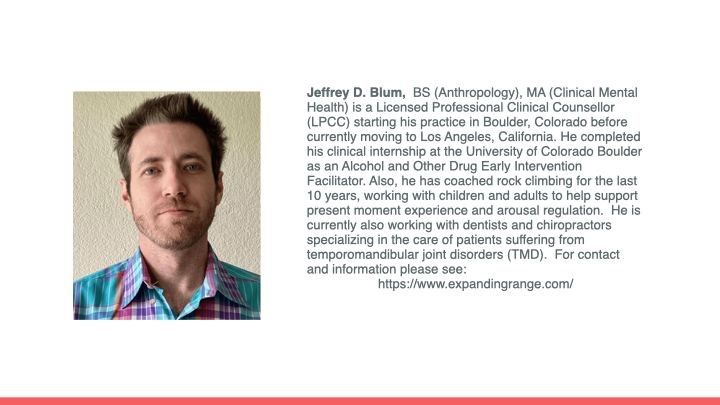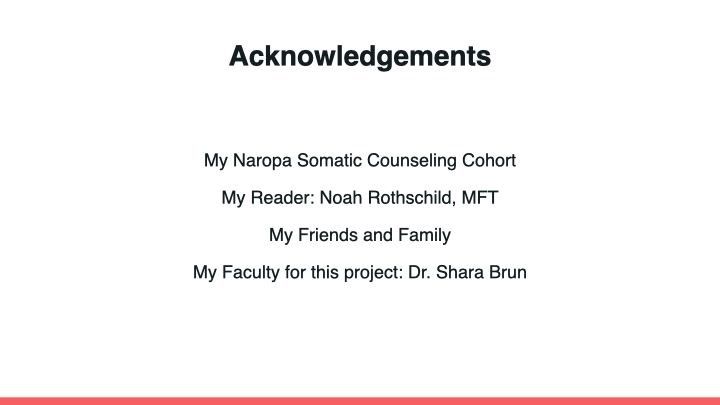Chiropractors will want to read us anywhere, anytime
Second Quarter 2025
(Apr-Jun)
Volume 5, Issue 4 (5-4)
read with your mind, care with your heart
Measles, to vaccinate or not to vaccinate: That is the question [Editorial]
Narrative abstract: Increasingly, cases of measles are being reported by mainstream media. At the time of preparing this editorial US Health officials say this year’s US measles epidemic has surpassed 1,000 illnesses which is already the highest in 27 years. However there are claims that the 10-year rolling average suggests measles is not making a comeback. In Australia a sustained slide in reported in routine child immunisation rates is raising alarm as data reveals under-vaccination of one-year-olds has spread from 11 to 53 regions, opening the door to more widespread infectious disease outbreaks.
Dr Blum has prepared this Editorial as a report of his closer look at he topic from his perspective as an active Chiropractic practitioner in suburban USA. He reports findings which give a context on measles and vaccination to assist his reading of The Measles Book: Thirty-Five Secrets the Government and the Media Aren’t Telling You about Measles and the Measles Vaccine, published by the Children’s Health Defense.
He brings a calm approach to a hot-topic issue.
Indexing terms: Chiropractic; measles; vaccination.
Cite: Blum CL. Measles, to vaccinate or not to vaccinate: That is the question. [Editorial] Asia-Pac Chiropr J. 2025;5.4 apcj.net/Papers-Issue-5-4/#BlumMeaslesEditorial
Quiz - test your knowledge of measles as it may present to your office
Called 'Fast Five Quiz: Are You Prepared to Confront the Measles Outbreak?' this quiz links to a Medscape quiz written by Michael Stuart Bronze, MD, published 19 March 2025
Michael Stuart Bronze, MD is David Ross Boyd Professor and Chairman, Department of Medicine, Stewart G Wolf Endowed Chair in Internal Medicine, Department of Medicine, University of Oklahoma Health Science Center, Oklahoma City, Oklahoma
Disclosure: Michael Stuart Bronze, MD, has disclosed no relevant financial relationships.
Medscape is the leading online global destination for physicians and healthcare professionals worldwide, offering the latest medical news and expert perspectives; essential point-of-care drug and disease information; and relevant professional education and CME.
Medscape membership is free and gives you unlimited access to the entire network of sites and services. Sign-up here.
Would You Be Able to Identify Measles in a Patient?
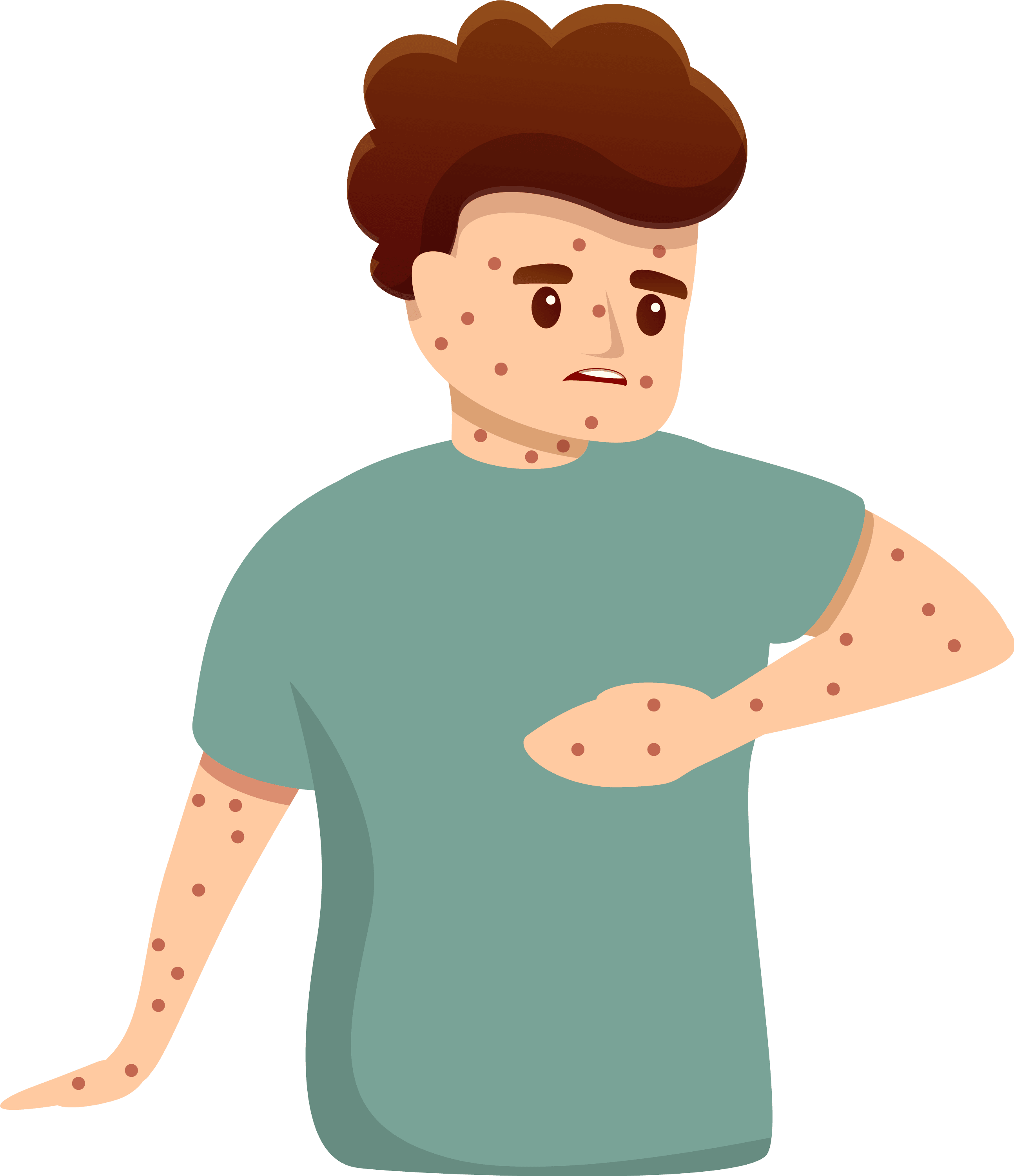
Chiropractic as vaccine
Narrative: This paper presents a short overview of political history around vaccines and concludes that part of the reason with the success of Chiropractic could lie in correcting the underlying joint dysfunction thereby preventing patients from receiving treatments of unproven cost utility or dubious efficacy from medical or PT providers.
Indexing Terms: Chiropractic; vaccine; vaccination.
Cite: Smith JC. Chiropractic as vaccine. Asia-Pac Chiropr J. 2025;5.4 www.apcj.net/Papers-Issue-5-4/#SmithVaccine
Empowering communities through Chiropractic: The impact of giving back
By dedicating time and effort to community service, we uphold the true essence of Chiropractic, which helping people live healthier, pain free lives, one adjustment at a time.
Indexing terms: Chiropractic; World Congress of Chiropractic Students, WCCS; Community engagement.
Cite: Govender P. Empowering communities through Chiropractic: The impact of giving back [WCCS]. Asia-Pac Chiropr J. 2025;5.4. www.apcj.net/papers-issue-5-4/#GovenderCommunities
The power of self-governance within Australian Chiropractic: A pragmatic analysis of the so-called ‘baby-ban’ which must now be resolved
Abstract: This paper applies standard methods of historiography to inform my Pragmatic Analysis of a Ministerial directive to the Chiropractic Board of Australia to reinstate what was introduced then removed by the CBA as an interim advice against Chiropractors manipulating children under 2.
I examine two videos which were lodged by Chiropractors on social media and find they represent responsible, safe Chiropractic care. I report the unreasonable interference on the profession from political medicine which led to the Safer Care Victoria Inquiry and the above mentioned reinstatement of the interim advice after the CBA had undergone due process to examine the matter and issue appropriate and meaningful advice to Australia’s registered Chiropractors.
I note the Royal Australian College of General Practitioners is hypocritical in its damning of the SCV Report as failing to show clinical effectiveness when (a) that was not the purpose of the inquiry, and (b) the RACGP’s own practice standards encourage Level 4 evidence which is essentially a consensus of expert opinion of clinical efficacy, as is also the practise within Chiropractic.
My findings support my contention that ‘the Chiropractic profession in Australia does not represent a danger to public health and has articulated self-governance to a high level such that formal intervention is no longer warranted and cannot be justified’.
My conclusion is that the Health Ministers’ Meeting (HMM) has sufficient appropriate and detailed information to act wisely right now in the best interests of all Australians, and especially those who choose to exercise their right to consult a Chiropractor by ceasing its discrimination against Chiropractors and returning to the status quo.
Indexing Terms: Chiropractic; political medicine; paediatrics; registration; legislation; safety; Chiropractic Board of Australia
Cite: Ebrall P. The power of self-governance within Australian Chiropractic: A pragmatic analysis of the so-called ‘baby-ban’ which must now be resolved. Asia-Pac Chiropr J. 2025;5.4. www.apcj.net/papers-issue-5-4/#EbrallPaediatricAnalysis
The Atlas Vertebrae and its role in the function of the Sacro Occipital Technique (SOT) Categories
Narrative: The role of the Atlas Vertebrae in human function has been discussed by Chiropractors since the early days of Chiropractic. (4) Dr MB DeJarnette DC, the founder and developer of Sacro Occipital Technique (SOT), has been a valuable contributor to the Atlas discussion.
His work focuses on the role the Atlas plays in the function of three primary systems of the body (known as categories) that comprise Sacro Occipital Technique. (6, 9)
Thus, the intent of this paper is to study the significant role that the Atlas plays in the function of these three SOT categories.
Indexing Terms: Sacro Occipital Technique (SOT); Chiropractic; Atlas;SOT Categories; SOT Indicators.
Cite: Getzoff H. The Atlas Vertebrae and its role in the function of the Sacro Occipital Technique (SOT) Categories. Asia-Pac Chiropr J. 2025;5.4. apcj.net/Papers-Issue-5-4/#GetzoffAtlasinSOT
Perspectives on the Lateral Atlas: A review of the literature
Narrative: Upper Cervical Chiropractic adjusting has long revolved around the lateral atlas, but controversy has followed. Biomechanics indicates that the atlas has no lateral flexion on the axis, raising questions about the nature of the lesion.
An exploration of the literature demonstrates various reference points used, which lend themselves to various understandings and adjustments, prompting me to describe a variety of adjusting styles.
Given the preeminence of the upper cervical region granted by neurology and morphology, a clearer idea of the aim of the Chiropractic adjustment is desired.
Indexing Terms: Chiropractic; Upper Cervical; biomechanics; adjusting; technique history; lateral atlas.
Cite: Baroody SB. Perspectives on the Lateral Atlas: A review of the literature. Asia-Pac Chiropr J. 2025;5.4. apcj.net/Papers-Issue-5-4/#BaroodyLateralAtlas
Doc, When Can My Kid Play? So, My Child Had a Concussion: When Will My Child's Brain Return to Normal? When Will I Get My Son/Daughter Back? [Book Review by Donald McDowall]
Book Details
Title: Doc, When Can My Kid Play?
Author: Evan Mladenoff, DC, DIBAK, FASA.
Publisher: Newman Springs Publishing, Red Bank, New Jersey, USA.
Language: English.
ISBN 979-8-89061-180-2 (Paperback), ISBN 979-8-89061-182-6 (Hardcover), ISBN 979-8-89061-1801-9 (Digital). No of Pages: 212, RRP: US$29.95 (softcover).
Indexing Terms: Chiropractic; Concussion; return to play; AK.
Cite: McDowall D. Doc, When Can My Kid Play? So, My Child Had a Concussion: When Will My Child's Brain Return to Normal? When Will I Get My Son/Daughter Back? [Book Review]. Asia-Pac Chiropr J. 2025;5.4. apcj.net/Papers-Issue-5-4/#McDowallBRMladenoff
Chiropractic Manipulative Reflex Technique: Based on the work of Major Bertrand DeJarnette, DO, DC [Book Review by Harvey Getzoff]
Book Details
Title: Chiropractic Manipulative Reflex Technique: Based on the work of Major Bertrand DeJarnette, DO, DC
Author: Charles L Blum, DC, CSP, CSCP
Publisher: Independent, July 2024
Language: English.
ISBN-13: 979-8328882200 (Paperback), No of Pages: 251, RRP: US$114.21 (softcover)
Indexing Terms: Chiropractic; CMRT; DeJarnette; SOT; Occipital fibres.
Cite: Getzoff H. Chiropractic Manipulative Reflex Technique: Based on the work of Major Bertrand DeJarnette, DO, DC [Book Review]. Asia-Pac Chiropr J. 2025;5.4. www.apcj.net/Papers-Issue-5-4/#GetzoffReviewCMRT
Reader beware: Rapid reviews have a trust issue
Narrative: This paper arose from us finding a meaningful contradiction in two papers returned during the preparation by one of us (JI) to write on the topic of whether a carefully conceived adjustment would show physical change in the position of a vertebrae as seen on radiographs.
We discuss the two papers, one a systematic review by Corso et al published as a Rapid Review on commission of the College of Chiropractors of British Columbia and the other was a traditional, well-researched report by Oakley et al. In essence Corso et al ‘found no evidence [for] the use of routine or repeat radiographs to assess the function or structure’ while Oakley et al ‘highlight[ed] current and historical evidence that substantiates that X-rays are not a public health threat’. The two views are in conflict.
Our interest lies in us considering certain radiographs to have high clinical utility to the safe and effective care of the patient, and we use such radiographs as the basis for our ‘companion’ paper on that topic. We also report serial imaging, a practice Corso et al dismisses.
In this paper we conclude that Rapid Reviews are currently weak as indexed in the literature of Chiropractic and should not be relied on to give a definitive perspective.
Indexing Terms: Chiropractic, Upper cervical; Spine; Radiograph; X-ray; Clinical utility; adjustment.
Cite: Ierano J, Ebrall P. Reader beware: Rapid reviews have a trust issue. Asia-Pac Chiropr J. 2025;5.4. www.apcj.net/papers-issue-5-4/#EbrallIeranoRapidReview
In Memoriam:
James M Cox
James M Cox, DC, DACBR, FICC, HonDLitt, DIANM(H)
Dr Cox emphasised that one thing no one can take away is one’s educated mind.
Cite: CoxTechnic and Editorial staff. James M Cox [In Memoriam]. Asia-Pac Chiropr J. 2025;5.4 apcj.net/papers-issue-5-4/#IMJamesCox
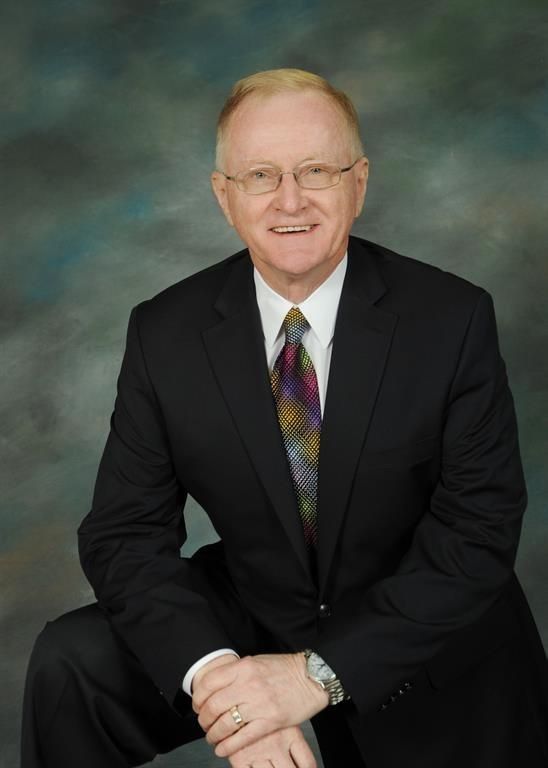
Channeling healing energy: Developing our intuition, Part eight
Narrative: It appears that our intuition is developed through multiple means and different types of internal processing. Apparently how information is conveyed to us, whether spoken or written, has an impact on how we think intuitively.
I have found that ‘true’ intuition does not compel, its voice is calm and suggestive without demanding, and allows me to consciously disagree. However if the intuitive voice is persistent it usually demonstrates there is something I need to consider.
Intuition does not force itself upon us and does not talk in an emotionally charged voice. It suggests and allows us to weigh whether or not it fits with logical criteria and what might be best for the patient. Intuition is always patient centred and not about the financial gain of the healthcare provider.
A healthcare practitioner that can learn to develop their clinical intuition can often help patients in ways other practitioners may not.
Indexing terms: Chiropractic; chiropractor; intuition; patient-centred care; healing energy.
Cite: Blum CL. Channeling healing energy: Developing our intuition, Part eight. Asia-Pac Chiropr J. 2025;5.4 apcj.net/Papers-Issue-5-4/#BlumHealingEnergy8
Manual Muscle Testing: The Chiropractic profession’s physical sign of the Motor Neuron’s ‘Tone’. A DD Palmer wish-fulfilment like no other
Narrative: All Chiropractors would appreciate that the founder, DD Palmer, stated in the frontispiece to his 1910 textbook that ‘Chiropractic is founded on tone’.
This seemingly straightforward proposition has been given different meanings, more recently by Chiropractors with advance academic studies wanting to grant the phrase an almost mystical meaning of Universal Intelligence culminating in Innate Intelligence. Nowhere is this more pronounced than in Stephenson’s ‘33 Principles’.
In this paper I show that the muscle system is ‘the most exposed part of the nervous system’ and as such we can, through Manual Muscle Testing as refined within AK Protocols, create a window into the functioning and dysfunctioning of the neuromuscular system as it affects health and well-being.
Chiropractic applied kinesiology assesses alterations in the human sensory-motor continuum and it achieves this based on sound principles without the need for appeal to mystical universal forces. We cannot make meaningful statements at all about an assumed ‘real universe’, or ‘deep reality’ or ‘first mover’ or ‘Universal Intelligence’ underlying this world and the neuro-musculoskeletal systems within our patients
Indexing Terms: Chiropractic; AK; Applied Kinesiology; human sensory-motor continuum; Stephenson.
Cite: Cuthbert S. Manual Muscle Testing: The Chiropractic profession’s physical sign of the Motor Neuron’s ‘Tone’. A DD Palmer wish-fulfilment like no other. Asia-Pac Chiropr J. 2025;5.4. apcj.net/papers-issue-5-4/#CuthbertTone
Disc focused Bio-Psycho-Social model per Gonstead clinical practice
Abstract: This short paper provides a scale of matter from subatomic through to the biosphere of the solar system and up to galactic and universal levels.
The intervertebral disc in humans is placed at the centre of this scale and comment is given on how the Chiropractic adjustment, specifically in the Gonstead paradigm, may influence the functioning of the disc, the individual person, and their family and community.
This perspective allows us to appreciate how a Chiropractic Adjustment, made with intent, may have broader outcomes than simple within-person health changes. Patients have the most control at their individual level through their daily choices, but as Chiropractors, our influence has three separate areas of effect with varying degrees of influence as I describe.
This view represents the contemporary Bio-Psycho-Social Model of health and illness, which has been developed as a more holistic perspective in understanding human health and illness in a fuller context.
Indexing Terms: Chiropractic; intervertebral disc degeneration; biopsychosocial model; health; well-being.
Cite: Meyer CJ. Disc focused Bio-Psycho-Social model per Gonstead clinical practice. Asia-Pac Chiropr J. 2025;5.4. www.apcj.net/papers-issue-5-4/#MeyersBSMDisc
A clinical update on lumbar disc degeneration
Abstract: This short paper, by way of an update, summarises several new learnings taken from a quiz published in Medscape based on the work of Ravi Ponnappan.
Six questions of evidence-based relevance worthy of inclusion in the standard ‘low back’ workup of Chiropractic physicians should now include (i) did you suffer from a brain tumour in childhood?, (ii) what are your lipid profiles?, (iii) are you diabetic?, (iv) what is your blood pressure?, (v) do you smoke?, and (vi) is your BMI above normal for your somatotype?
I conclude this overview with the point that platelet-rich plasma in the treatment of patients with lumbar disc herniation is safe and effective.
This represents a non-surgical alternative for patients with lumbar disc degeneration should Chiropractic Adjustments not produce the desired outcomes.
Indexing Terms: Chiropractic; Low Back Pain; lumbar disc degeneration; childhood brain tumour; diabetes; lipid profiles; patient history
Cite: Ebrall P. A clinical update on lumbar disc degeneration. Asia-Pac Chiropr J. 2025;5.4. www.apcj.net/papers-issue-5-4/#EbrallLBPUpdate
Letters: Engel, Masarsky. Respiratory RCTs: What Are We Missing?
Original abstract: To date the RCTs reporting the response to Chiropractic care by patients with asthma, COPD and related pulmonary disorders have omitted real-world factors which in turn produces biased results.
Based on my own considerable experience with such patients I recommend that RCTs now (i) record the detail of any injury about the time of asthma onset, (ii) allow for a reasonable period of continuing care and measurements, for example for more than one year, to enable investigators to better account for the influence of seasonal changes, such as pollen count, temperature and humidity, among other factors, and (iii) recognise the complex neurology associated with such conditions and take a more holistic, full-spine approach instead of just a short period of care with an unacceptably low number of care visits.
Indexing terms: Chiropractic; chiropractic RCT; asthma; COPD; respiratory disorders.
Cite: Letters: Engel, Masarsky. Respiratory RCTs: What Are We Missing? Asia-Pac Chiropr J. 2025;5.4. www.apcj.net/papers-issue-5-4/#Letters
Supine and prone SOT pelvic block placement: A comparative analysis of position by MRI
Introduction: Pelvic blocks or wedges have been utilised in the Sacro Occipital Technique (SOT) method of chiropractic since the 1960s with a rational for both supine and prone block placements.
Methods: Four same-subject magnetic resonance images were taken supine and prone, two with pelvic blocks and two without pelvic blocks (control).
Results: Comparing control and intervention sequences, there does not appear to be any measurable anatomical changes in the sacroiliac joints between the control studies and the blocked studies.
Discussion: Research has noted that, with pelvic block use, functional changes such as reduced pain, improved range of motion, and muscle strength have been found, yet this may be due to neuromuscular and not mechanical effects. This study had limitations and future studies should utilise greater field strength magnets for better resolution, visualise the whole bony pelvis instead of isolating the sacroiliac joint, and incorporate more extensive three-dimensional analytic technology.
Conclusion: The positive clinical functional changes associated with SOT pelvic block placement may be due to neuromuscular factors and not solely mechanical. Future research utilising the information learned from this study may yield a clearer picture of what is taking place with pelvic block placement(s)
Indexing terms: Chiropractic; SOT; SOT blocks; pelvic; wedges.
Cite: Blum CL, Warshel C, Khan S, Cassa T. Supine and prone SOT pelvic block placement: A comparative analysis of position by MRI. Asia-Pac Chiropr J. 2025;5.4 apcj.net/Papers-Issue-5-4/#BlumSOTBlocks
Conservative and reversible: The role of Body Psychotherapy in the treatment of Temporomandibular Disorders
Narrative: Temporomandibular Disorder (TMD) is a common and impairing form of musculoskeletal pain that involves chronic pain and tension of the jaw and facial muscles. In spite of its pervasiveness, TMD’s exact causes remain uncertain and optimal treatments are undecided.
Current evidence suggests that stress and emotional experiences may be related to experiences of TMD, and some research suggests that psychotherapeutic approaches may be beneficial for TMD. However, minimal research specifically examines how somatic therapy may be applied to TMD.
In this paper, I review current ways of defining TMD and methods of treatment. In addition, I look at how somatic theorists view these symptoms, and review evidence that suggests body psychotherapy could be a useful intervention for TMD, either on its own or in conjunction with other care.
I offer suggestions and considerations for body psychotherapists when working with jaw pain. Based on current research, it appears that body psychotherapy may be uniquely positioned to support clients with TMD, given its ability to help clients process their relationship to pain, bring awareness to underlying stressors, and support self-care practices.
However, additional research is needed to further explore the potential benefits of body psychotherapeutic approaches for this population, as well as the development of more accessible assessment tools to support body psychotherapists in working collaboratively with other allied health care practitioners.
Indexing terms: Chiropractic; Body Psychotherapist; psychotherapy; jaw pain; TMD; co-management.
Cite: Blum JD. Conservative and reversible: The role of Body Psychotherapy in the treatment of Temporomandibular Disorders. Asia-Pac Chiropr J. 2025;5.4 www.apcj.net/papers-issue-5-4/#BlumTMD
A chiropractic history of Applied Kinesiology in France
Narrative: This paper is based on phone and written exchanges with Thérèse Belline, Katharine Conable, Brice David, Gilles Duteil, Philippe Fleuriau, Florent Fournier, François-Xavier Fournier, Geneviève Gagné, Charles Héroux, Didier Jouffrieau, Alain Liny, Donal McDowall, Alain Marchand, Jay Marienthal, Jean-Pierre Meersseman, Daniel Nicolle, Jean-Philippe Pialasse, Laurent Picard, Claude Portal, David Rajkumar, Alexis Ryan, Yann Schmitt, Joseph Shafer, Anne-Eugénie Simard et Anne-Marie Yvroux. We extend our warmest thanks to them.
With sincere acknowledgments too for the valuable contributions of Marine Angles d’Auriac, Manon Blanchard, Sébastien Duijndam, Tidiane Dumoulin, Mathias Herr, Anne-Karine Parra, Anne-Eugénie Simard et Louis-Marie Tinthoin. And particularly to Garry Gill for the English translation’s correction.
Indexing Terms: Chiropractic; Applied Kinesiology; History; France.
Cite: Blanchard C, Meldener R. A chiropractic history of Applied Kinesiology in France. Asia-Pac Chiropr J. 2025;5.4. www.apcj.net/papers-issue-5-4/#BlanchardAKFrance
Une histoire chiropratique de la kinésiologie appliquée en France
Récit: Ce texte est en grande partie basé sur des échanges téléphoniques ou écrits avec Thérèse Belline, Katharine Conable, Brice David, Gilles Duteil, Philippe Fleuriau, Florent Fournier, François-Xavier Fournier, Geneviève Gagné, Charles Héroux, Didier Jouffrieau, Alain Liny, Donal McDowall, Alain Marchand, Jay Marienthal, Jean-Pierre Meersseman, Daniel Nicolle, Jean-Philippe Pialasse, Laurent Picard, Claude Portal, David Rajkumar, Alexis Ryan, Yann Schmitt, Joseph Shafer, Anne-Eugénie Simard et Anne-Marie Yvroux. Nous leur adressons nos chaleureux remerciements.
Avec nos remerciements également pour les précieuses relectures de Marine Angles d'Auriac, Manon Blanchard, Sébastien Duijndam, Tidiane Dumoulin, Mathias Herr, Anne-Karine Parra, Anne-Eugénie Simard et Louis-Marie Tinthoin.
Conditions d'indexation: Chiropractic; Applied Kinesiology; History; France.
Indexing Terms: Chiropractic; Applied Kinesiology; History; France.
Cite: Blanchard C, Meldener R. Une histoire chiropratique de la kinésiologie appliquée en France. [French] Asia-Pac Chiropr J. 2025;5.4. www.apcj.net/papers-issue-5-4/#BlanchardAKFranceFRAKFrance
Case Reports
Improved reading and academic performance: A case series of 3 dyslexic students with learning disability
Narrative: This case series discusses 3 cases of students diagnosed with dyslexia and struggling with learning disability who received chiropractic care and functional neurology therapy based on the Melillo Method™
Hemispheric model theory suggests that the left cerebral hemisphere is associated with language development. It is therefore important to identify areas of inconsistency in the left cerebral hemisphere that may be associated with developmental delay. Therapeutic stimulations may yield hemispheric balance and enhance language development, equipping students to improve their academic performance. (17, 35)
The improvements of reading levels and academic performance in these 3 cases provided the practitioners, parents, educators and students themselves with direction to approach learning disability and dyslexia. The common presentations shared across these cases were inattention, poor memory, slow processing, poor comprehension, difficulty following instructions, inability to multitask, lack of motivation, delayed speech, spelling and reading difficulty, and poor handwriting.
Inspired by Melillo Method™ the main strategy was to follow, bottom-up, the developmental trajectory that begins in the brain stem, followed by the vestibular system in the rhombencephalon, then the sensory and motor cortices and eventually the prefrontal cortex. (26) A comprehensive assessment was designed to examine the maturity of the central nervous system from the brain stem to the cortical level. This included a hemispheric checklist, vital signs, primitive reflexes, vestibular assessment, ocular motor assessment and neural timing assessment.
The treatment plan aimed to promote neuroplasticity by building networks in the targeted brain functional areas, the left hemisphere in these patients. The treatment modalities included Chiropractic Adjustments and 24 brain-based therapy sessions over 12 weeks using photobiomodulation, digital therapy, dynamic balance training, neural timing training, ocular motor training with co-activation of colour, auditory, olfactory and sensory-motor stimulation during the above-mentioned training protocols. The program was also reinforced by an individually designed home exercise program to integrate primitive reflexes and maintain the intensity and frequency of brain stimulation daily. In the 12-week period, the student subjects show improvement in their reading and academic performance as well as their work ethics, motivations and emotional stabilities. Objective functional measurements also displayed marked improvement across the board in most post-program physical and neurological assessments.
Indexing Terms: Chiropractic; Adjustment; Melillo Method; dyslexia; reading difficulties; NeuroImpulse Protocol.
Cite: Huang JS-F. Improved reading and academic performance: A case series of 3 dyslexic students with learning disability. Asia-Pac Chiropr J. 2025;5.4. apcj.net/papers-issue-5-4/#HuangDyslexia
Long COVID with Parosmia and Exertional Malaise: A case report
Narrative: A 66-year-old retired military officer suffered symptoms of long COVID including dizziness, exercise intolerance, olfactory deficits, and ‘pins and needles’ paresthesia. Exercise tolerance as measured by steps per day progressed from 3,000 steps per day at presentation to 5,000 by the time of this report.
Reported sense of smell was almost normal by the end of the study, and episodes of parosmia had become infrequent. These significant improvements were noted after less than three months of chiropractic care (16 visits).
Care included Chiropractic Adjustments and instruction in cervical post-isometric relaxation and oropharyngeal exercises. Possible complications include the side-effects of Paxlovid™, emotional distress related to his father’s illness and subsequent death, and possible reactivation of obstructive sleep apnea.
Indexing Terms: Chiropractic; Subluxation; Long COVID; dizziness; olfactory deficits; exercise intolerance.
Cite: Masarsky CS, Todres-Masarsky M. Long COVID with Parosmia and Exertional Malaise: A case report. Asia-Pac Chiropr J. 2025;5.4. www.apcj.net/papers-issue-5-4/#MasarskyLongCOVID
A study of the nature of SOT occipital line fibres: A retrospective case series of 65 patients
Narrative: Sacro-occipital technique (SOT) occipital fibres is a Chiropractic technique developed by Major Bertrand DeJarnette, DO, DC with multiple aspects integrated into a single system of care.
Occipital fibres technique (OFT) assists the Chiropractor in locating and adjusting thoracic and lumbar vertebral subluxations.
It also helps identifying specific viscerosomatic/somatovisceral reflex organ problems while incorporating visceral soft tissue therapeutic applications.
OCT can facilitate the management of dis-ease while at the same time providing a philosophy of care. This is a retrospective study that reviewed the records of 65 patients adjusted using SOT occipital fibre technique (OCT) and was conducted in parts during 2011 and 2012.
Indexing Terms: Sacro Occipital; Sacro Occipital Technique; SOT; Golgi tendon; somatovisceral reflexes; viscerosomatic reflexes; Chiropractic Manipulative Reflex Technique, CMRT; occipital fibre technique.
Cite: Getzoff H, Blum CL. A study of the nature of SOT occipital line fibres: A retrospective case series of 65 patients. Asia-Pac Chiropr J. 2025;5.4. www.apcj.net/papers-issue-5-4/#GetzoffOccipitalFibres
Chiropractic resolves severe digestive burning: A case report
Narrative: A 64 year old female with substernal burning pain and diaphragm weakness secondary to hyperchlorhydria and medicated with antacid at every meal proved resistant to care in the AK paradigm.
When a correction is difficult to obtain and a condition returns rapidly, some problem not yet located is recreating the involvement.
Further investigation led to a trial of betaine hydrochloride orally, to suck. The muscles pattern was re-tested and the pectoralis major (clavicular division) was now found bilaterally strong, and there was no evidence of the temporal bulge or parietal descent cranial dysfunctions, and the reactive psoas-diaphragm complex were no longer present.
Zinc supplementation is often necessary in the natural treatment of digestive enzyme disturbances and hydrochloric acid deficiencies. The patient took betaine hydrochloride with meals for 2 weeks and now now frequently eats chilli made with hot chilli peppers (a staple on Negros Oriental Island in the Philippines) and any other spicy Filipino food she desires. There has been no return of her symptoms of hyper-or-hypochlorhydria.
Indexing Terms: Chiropractic; hyperchlorhydria; substernal pain; Applied Kinesiology; betaine hydrochloride.
Cite: Cuthbert S. Chiropractic resolves severe digestive burning: A case report. Asia-Pac Chiropr J. 2025;5.4. www.apcj.net/papers-issue-5-4/#CuthbertDigestion
TMD - Chiropractic and Dentistry: Two case reports
Introduction: In conditions where a chiropractor or dentist has reached a therapeutic impasse with a patient’s temporomandibular/craniomandibular disorders (TMD/CMD), co-treatment may be indicated.
Intervention: The treatment with these two patients had similar aspects in that they both presented with sacroiliac joint hypermobility syndrome (category two), cervical intersegmental restricted motion, and needed craniomandibular balancing therapeutic interventions.
Results: The essential findings in both cases showed reduced pain in TMJ function and/or symmetrical joint translation without crepitus. General relaxation in cervicocranial and craniomandibular musculature was noted by the patient, chiropractor and dentist. The focus was having the patient gain independence from chiropractic/dental care with reduced discomfort and increased function.
Discussion: Within a subset of patients body posture has been found to affect or be affected by dental occlusion, condylar position, and airway space. A main obstacle for chiropractic/dental co-treatment is the lack of awareness and knowledge of each other’s professional treatment and diagnostic focus as well terminology. A relationship has been found between ascending/descending and CMD/TMD and postural dysfunctions.
Conclusion: While these two cases illustrate how the chiropractic and dental fields can work together for successful treatment outcomes, there is a need to determine what subsets of patients may fit this model.
Indexing Terms: Chiropractic; Subluxation; Dentistry; TMD; Co-treatment.
Cite: Panahpour A, Blum CL. TMD - Chiropractic and Dentistry: Two case reports. Asia-Pac Chiropr J. 2025;5.4. www.apcj.net/papers-issue-5-4/#PanahpourBlum
Resolution of disc-related peripheral oedema following Chiropractic treatment A case report
Narrative: A 36-year-old female patient with no significant medical history suffered a fall with resultant stabbing back pain and herniated nucleus pulposus of L4/L5 and L5/S1 with severe discomfort and moderate non-pitting oedema in her legs, worse on the right, affecting her quality of life. A constant, deep ache in her left lower abdominal quadrant and bilateral inguinal region was also present. Deep vein thrombosis and underlying pathology were ruled out.
Physical examination revealed a non-pitting oedematous right lower leg with diminishment of crude touch and pinwheel sensations, absent patellar and calcaneal deep tendon reflexes, and significant mechanical and positional distortions with iliopsoas dysfunction.
Clinical metrics were monitored throughout her 11-treatment care protocol. Significant reduction in back, leg and left abdominal pain was reported within 4 treatments with improvements in movement ability and functional daily tasks noted with a reduction in measured oedema and mechanical dysfunction. The previously absent calcaneal reflex became detectable bilaterally by the end of the initial 8 treatment phase. This was compared to the only other case of peripheral oedema subsidence following Chiropractic care reported in literature where the proposed improvement mechanism was attributed to autonomic regulatory effects of Chiropractic adjustments.
This report proposes a haemodynamic-related cause of oedema due to compression of the common femoral vein secondary to mechanical dysfunction and prolonged hip extension. The mechanism by which Chiropractic treatment is effective in this case is considered to be in the treatment of underlying mechanical dysfunction.
Indexing Terms: Chiropractic; subluxation; oedema; disc herniation; diversified.
Cite: Jack D. Resolution of disc-related peripheral oedema following chiropractic treatment A case report. Asia-Pac Chiropr J. 2025;5.4. www.apcj.net/papers-issue-5-4/#JackOedema
Resolution of lifelong gastrointestinal symptomatology in a 9-year-old female with the use of Chiropractic Manipulative Reflex and Bloodless Surgery techniques: A case report
Narrative: A 9-year-old female with a lifelong history of gastrointestinal symptoms, including inconsistent stool quality, abdominal bloating, and an inability to retain faecal matter, presented to a chiropractic clinic. The primary concern of her parents was the developmental and social delay resulting from missed school days, as well as the psychosocial distress caused by her condition.
Medically, the child had been diagnosed with childhood irritable bowel syndrome (IBS) and unsuccessfully managed for several years. The lack of symptomatic improvement and the ongoing impact on the child’s quality of life led the mother to explore alternative treatment options for their child.
The case was deemed suitable for a trial of care by the attending Chiropractors, and the child was managed for an initial period of six weeks using a combination of Chiropractic techniques.
By 12 weeks, the mother and child reported a near-complete resolution of symptoms, with unplanned bowel movements reducing from a high of 30 per day to just two per week. The child also resumed all after-school activities.
This case report presents anecdotal evidence to support further research into the use of specific chiropractic techniques for managing chronic and debilitating gastrointestinal conditions.
Indexing Terms: Chiropractic; Subluxation; Torque Release Technique; fertility; pregnancy.
Cite: Bento MP, Battiston A. Resolution of lifelong gastrointestinal symptomatology in a 9-year-old female with the use of Chiropractic Manipulative Reflex and Bloodless Surgery techniques: A case report. Asia-Pac Chiropr J. 2025;5.4. www.apcj.net/papers-issue-5-4/#BentoIncontinence
Disclaimer
This journal is a professional journal by chiropractors for chiropractors. Readers not fully trained as a chiropractor should not act on their own on any information published in these pages and should always discuss their situation with their chiropractor.


